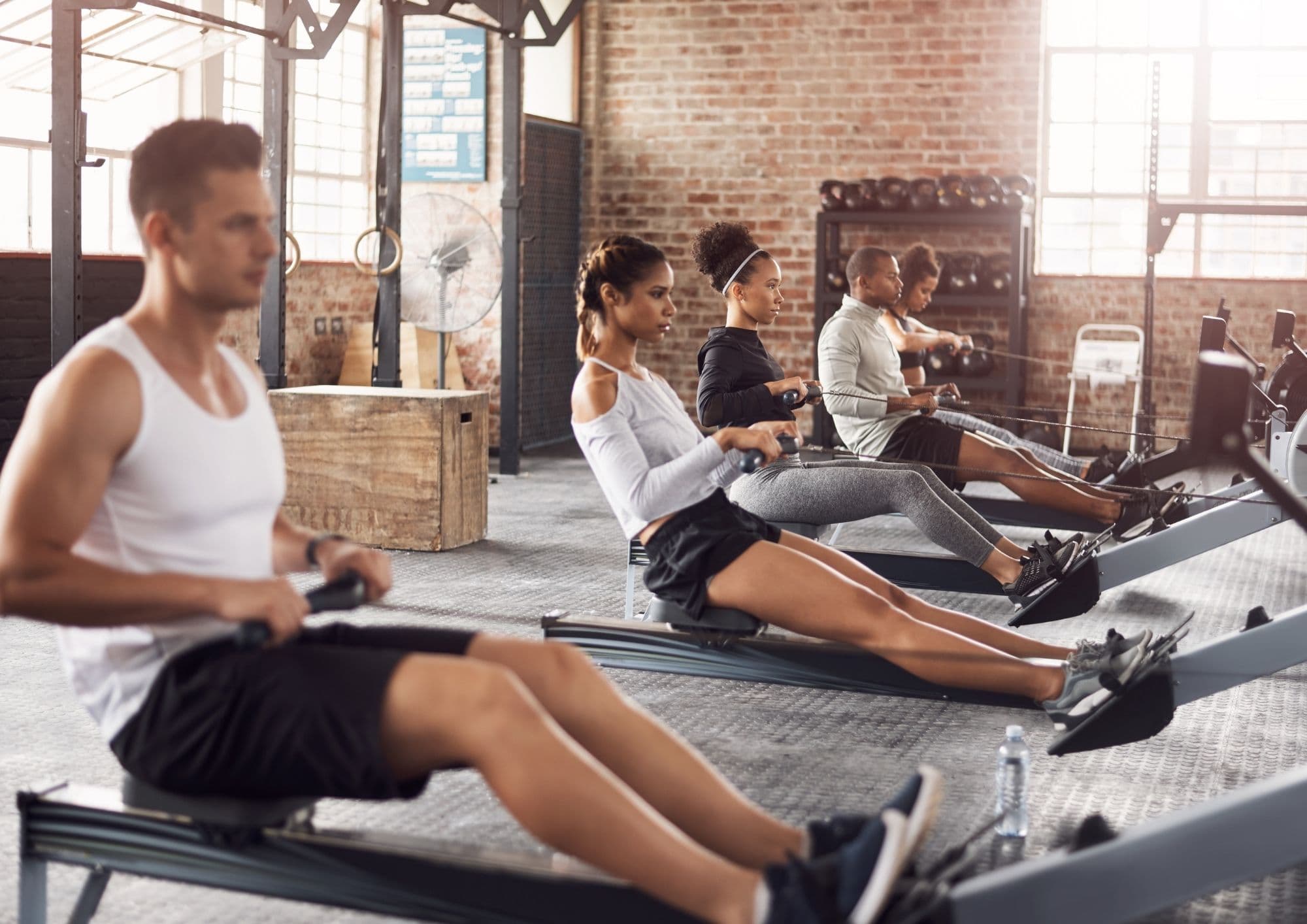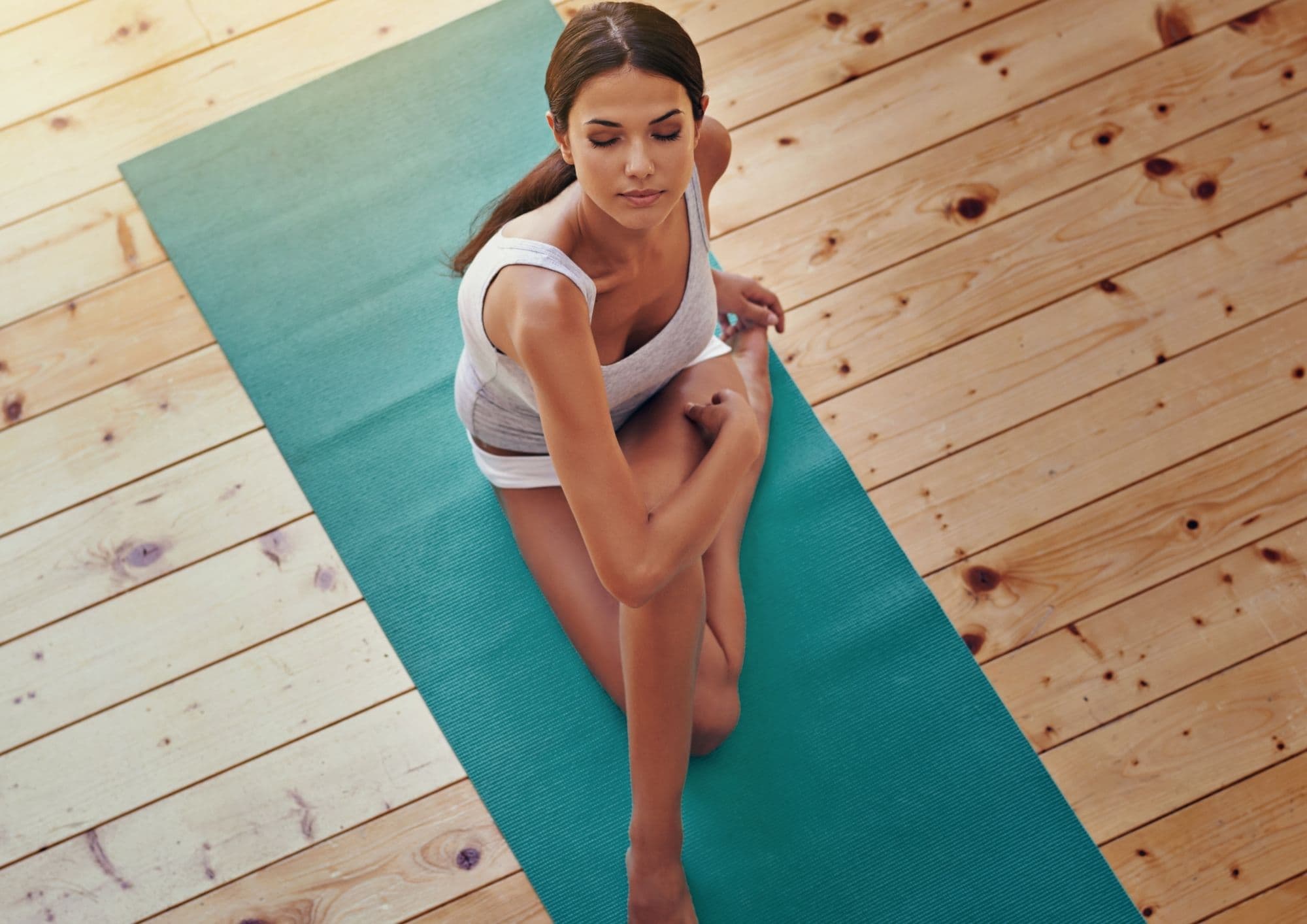One of the best ways to tone your body and maintain your muscle mass is to exercise using a rowing machine. This machine is designed to target both the upper and lower muscles of the body on every stroke. You can reap the health benefit of rowing, and at the same time improve your endurance using this nifty machine. So, what, exactly, are the benefits of rowing?
Rowing was once believed to work out only the arms. But the truth of the matter is that rowing is a full workout that entails 25-35% workout of the upper body and 65-75% leg work. The major muscles like the glutes, calves, and quadriceps are involved in the activity.
The upper body muscles like the arms, pecs, obliques, and abdominal muscles are strengthened. The legs, which are busy doing the drive part and pushing the foot off the stretcher when rowing, are also engaged, thus making this activity a total body workout.
Rowing machine benefits can be felt as early as five days after using the machine. People attested to the fact that it significantly lowered their total body fat ratio, their cholesterol levels dropped and they develop a significant increase in their flexibility.
Ten Benefits of Using a Rowing Machine

1. It Is A Full Body Workout
Rowing exercises can engage 85% of your body muscles to function when performing the full movement or stroke properly. This equipment will improve your cardiovascular capacity and help build strength in no time.
2. It Can Be Meditative
The mind-body connection that comes from rowing helps the mind go on autopilot. This can be the result of the repetitive, smooth gliding movement created by this ergometer machine. In turn, this can help the body release the feel-good hormones or the endorphins that prevent stress.
3. It Is A Great Alternative To The Elliptical Or Stationary Bike
Stationary bike targets mainly the lower body. The elliptical and the rowing machine do target the upper and lower areas but the rowing machine requires more effort with each stroke using the upper body muscles and the abs. The indoor rower works the entire body and it is great for active recovery too.
4. It Can Be Set Up In Most Homes
Having little space at home is not an excuse for not getting the exercise that your need. Most rowers can be set up easily in the living room or any available space and can be stowed away after use. This great perk of having your own machine can help increase your time doing your core exercises in the comfort of your home.
5. It Is A Fast And Effective Way To Reach Your Fitness Goal
The rowing machine workout targets all the muscles in the upper and lower areas of the body. Hitting this entire major muscle group means getting both the cardio and strength workout needed to achieve your goal even in a short time.
6. It Is A Low-impact Exercise
Rowing is a good routine for health buffs as well as people who have early stages of osteoarthritis. This condition can be relieved by taking necessary measures that may include staying active.
One type of exercise recommended is rowing as this will not stress the joints. This low-impact exercise can be done according to your pace. Being active in rowing can help in the recovery of joint function and slow down the progression of the symptoms.
7. Rowing Exercises Work Your Core And Glutes
The gliding movement on the rowing machine is similar to doing mini sit-ups that can target the core muscles to crunch and relax. The motion of shooting your seat backwards will work out your lower body. These movements with the proper form effectively target both the core and glutes using a single machine.
8. A Rowing Machine Helps Build Power And Endurance
Strengthening the body and cardio workouts are just some of the benefits you can reap from using a rowing machine. Strength training or having the power to exert maximum force in a short time can be further enhanced when you use the rowing machine.
Rowing correctly means using your arms and leg muscles to propel your body and develop strength. This will also improve your endurance to sustain this activity for a longer period. Performing the rowing exercise can target both the muscular and cardiovascular forms of endurance.

9. Improve Posture
Most people who hunch over their desks at work can benefit from performing rowing exercises to strengthen their upper bodies. Women, in particular, may not have the strongest back which can result in a bad posture.
Rowing exercises, when done correctly, will help strengthen the upper body muscles which can result in the improvement of posture. Rowing requires you to straighten your back and be uptight as you pull your oars. This will prevent you from slouching.
10. It Is A Versatile Workout
One of the beauties of using an indoor rowing machine is that it can be applied to both HIIT (high-intensity interval training) as well as LISS (low-intensity steady-state training). These multiple types of workouts can be performed depending on your preference.
You can do the LISS to build your aerobic exercise capacity and then move to the HIIT when you have the endurance to carry over the burst of energy needed to do it.
Why Use a Rowing Machine?
Rowing machines, also known as ergometers or ergs, utilise almost all muscles of the body with every stroke. Having access to this workout machine and adding rowing as part of their routine can benefit people of all fitness levels.
How Do You Use a Rowing Machine Properly?
When you use the indoor rowing machine for the first time, take into account the number of strokes or rows that you do in a minute. Keep it at 30 or fewer strokes per minute. Focus on power, not speed. Avoid flinging your body back and forth. A sore back when lying in bed means you did not row in the right form.
Start by doing leg isolations. Do this by using your legs only to push back, extending your arms straight ahead of you. Do this several times.
Arm isolation is next. Do this while your legs are fully extended on the machine. Use your arms only to pull the oar toward your chest several times. With elbows bent out to the sides, pull the oars just under the chest.
When you are comfortable doing these activities, bring them all together and start doing the rowing workout. Back straight, core engaged, and feet firmly in straps, push backwards using your lower body. Pull hands with the oar towards your chest using the upper back. Release the arms towards the base while bending the knees to glide to starting position.
Common Mistakes When Using A Rowing Machine
1. Your back is hunched.
When your back is hunched using this type of cardio machines, you’re letting your shoulder do all the work. You need to correct your posture before starting your workout. Do this by pushing your shoulders back to open your chest. Keep the back straight by engaging your core. Breathe deeply.
2. Raising the arms too high.
The correct way to row is by bringing the oar just below your chest, not to your chin. This oar to chin movement may mean you are using more energy than what is necessary.
3. Gripping the oar too tightly.
Don’t use the oar like a pull bar or wrap your thumbs around the oar like you don’t want to let it go. Do the correct way by placing your hands outside the oar and not on the centre. Rest your thumbs on the top and float your pinky at the ends of the oar. Use your first, middle, and ring fingers for gripping. When you pull back, engage your upper back not your biceps and shoulders. This will put less pressure on your hands.

4. Letting your knees drop to the sides
Floppy knees mean you are not stimulating your hip flexors or engaging your inner thigh muscles when you work out. The proper way to do it is to have your knees in line with your hips, keeping your knees close together as you push and glide. Strapping your feet correctly on the machine can also help.
Conclusion
Rowing is not a workout solely for arm muscles strengthening or the upper body. It engages almost all muscles to perform during a workout. The versatile rowing machine has different types that can be used for multiple types of exercises. You can also tweak the device according to your comfortable settings to pace yourself. You can do your workout in steady increments for a stress-free routine.
Related Questions
1. What are the different types of rowing machines?
Rowing machines come in four different types: hydraulic, air resistance, water rower, and magnetic resistance.
2. Is rowing good for the knees?
Knee issues can easily be addressed by engaging in rowing and resistance training. Since the rowing machine can give both the advantages of these exercises, this can be one of the best exercise machines for bad knees.